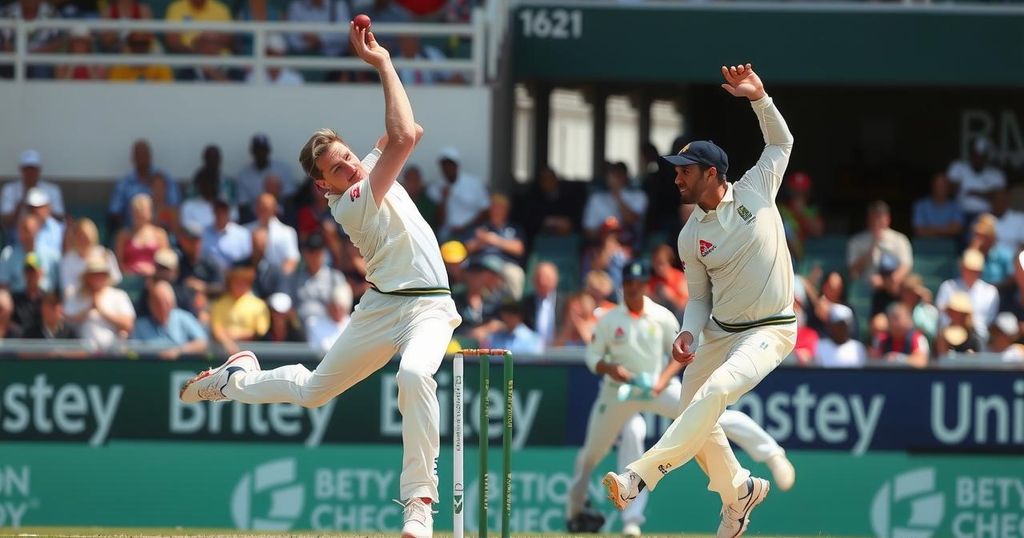TV Deals Under Scrutiny as Brazilian GP Concludes F1’s Americas Triple-Header
The Brazilian Grand Prix signals the close of Formula 1’s triple-race series in the Americas, bringing attention to the uncertain future of broadcasting rights in Brazil and the US. As current contracts extend to 2025, concerns emerge from Band’s financial struggles and Globo’s potential resurgence in Brazilian broadcasting. Meanwhile, ESPN enjoys heightened viewership in the US, raising questions about future rights negotiations amid a booming interest in F1.
As the Brazilian Grand Prix marks the conclusion of Formula 1’s recent triple-header in the Americas, the focus shifts to the tenuous future of F1 broadcasting agreements in both Brazil and the United States. With their current contracts set to expire at the end of 2025, the landscape for F1 broadcasting remains uncertain. Following a dramatic victory by Ferrari in Mexico, the anticipation for the Brazilian race is palpable as fans across the globe await the next developments in the ongoing championship battle among three teams. The Grand Prix at Interlagos serves not only as a critical point in the championship but also as a potential turning point for broadcasting rights, particularly with the emerging interest in Brazilian driver Gabriel Bortoleto, who leads the F2 championship and may influence viewer interest significantly. In Brazil, the current broadcaster, Band, entered into a three-year agreement in 2022 to cover all F1 races until 2025. However, Band has reportedly encountered financial challenges relating to their deal and has sought renegotiation of terms, causing concerns about their ability to fulfill the contract. Additionally, it has been suggested that a contract termination could be on the table, though Band disputes this possibility and has expressed commitment to adhere to their contract until its conclusion. Meanwhile, Globo, Brazil’s largest commercial television network, is positioning itself to regain F1 broadcasting rights post-2025, having previously aired the sport for decades. Reports indicate that a potential agreement was reached to broadcast 15 races on free-to-air television starting in 2026, contingent on Band’s contractual relations being resolved. Across the Atlantic in the United States, the newfound popularity of F1 has resulted in a lucrative broadcasting deal for ESPN, which has experienced record viewership in recent years. Following a new agreement in 2022, ESPN is set to broadcast at least 16 races through 2025, with substantial investments showing the growing interest of American audiences in the sport. However, as the current deal nears its conclusion, speculation remains about whether ESPN will renew or if another broadcaster may emerge to claim the rights from 2026 onwards. The dynamics surrounding these broadcasting agreements underscore the interplay between regional interest in Formula 1 and contract negotiations that could reshape the viewership landscape in both nations in the near future.
This article discusses the broadcasting rights of Formula 1 in Brazil and the United States, focusing on the implications of current contracts that run until 2025. The Brazilian market is impacted by new drivers like Gabriel Bortoleto, while American audiences have shown increasing interest in the sport, leading to a significant contract with ESPN. The uncertainties surrounding these agreements could affect both current and future viewership.
The conclusion drawn from the analysis of F1 broadcasting rights in Brazil and the United States highlights a landscape rife with potential change. As various stakeholders, including Band and Globo in Brazil and ESPN in the United States, navigate contract negotiations, the outcome may significantly shape the future of F1 viewership in these key markets, potentially impacting the sport’s growth and audience engagement. The uncertainties surrounding these agreements suggest that the final decisions will be pivotal for how fans access and engage with Formula 1 in the coming years.
Original Source: www.autosport.com




Post Comment